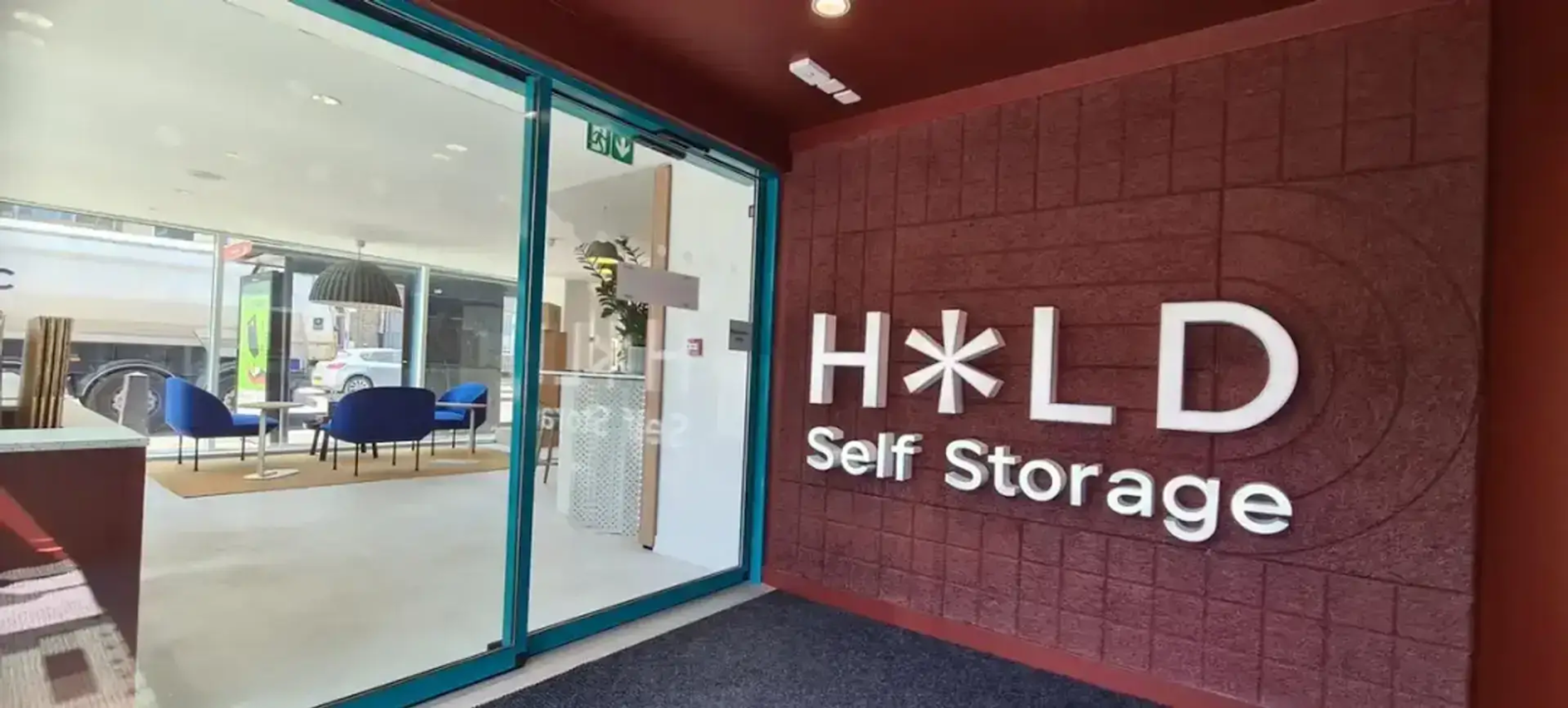Valuing a storage unit business is a critical process for prospective buyers, sellers, and operators. The self storage industry has become increasingly competitive, with growing demand for flexible storage solutions for personal belongings and business use alike.
Whether you're considering purchasing a self storage business or aiming to enhance the value of your existing facility, understanding the valuation process is key.
Key factors influencing the value of a storage unit business
When assessing a storage business, several factors determine its worth:
Location

The location of a storage facility greatly affects its value. Sites in urban areas or regions with high population density often attract more customers due to convenience and demand.
Conversely, facilities in rural locations may face challenges in maintaining occupancy rates, although they might benefit from lower operating costs.
Proximity to residential areas, businesses, and transport links enhances accessibility and desirability, significantly boosting storage income.
Occupancy rates
High occupancy rates are a strong indicator of a thriving storage business. Facilities with consistently full or near-full occupancy demonstrate effective marketing strategies and competitive pricing.
On the other hand, low occupancy rates might suggest operational inefficiencies, insufficient marketing, or overpricing. Regularly monitoring occupancy trends helps operators make informed adjustments to attract and retain customers.
Revenue streams
Diversifying revenue streams beyond traditional storage units can significantly increase a business’s value. Additional offerings like container storage, climate-secured units, and ancillary services—such as selling packing supplies or offering van hire—create multiple income sources.
This diversity not only boosts overall revenue but also mitigates risks associated with fluctuating demand for specific services.
Operating expenses
Managing operating expenses is crucial to maximising net operating income (NOI). Key expenses include utilities, maintenance, insurance, and property taxes.
Operators who implement cost-saving measures, such as energy-efficient lighting or automated systems, can improve their profit margins and enhance the facility’s valuation.
Market trends
Staying informed about trends in the storage industry is vital for maintaining competitiveness. For instance, rising demand for container storage or innovations like digital booking platforms can present opportunities for growth.
Operators who adapt to these trends often gain a competitive edge, attracting more customers and increasing the facility’s value.
Metrics for accurate valuation
To accurately determine the value of a self storage property, it is essential to use key metrics:
Net operating income (NOI)
NOI is a cornerstone metric in the valuation process. It represents the total income generated by the business after deducting operating expenses but before accounting for debt service and taxes.
A higher NOI indicates a more profitable operation, which directly translates to a higher valuation. For example, an operator might increase NOI by improving occupancy rates or reducing utility costs.
Tracking NOI over time also helps operators identify trends in profitability and evaluate the success of implemented strategies.
Cap rate
The capitalisation rate (cap rate) is a crucial metric used to estimate the value of a property by dividing the NOI by the market’s expected rate of return.
For example, if a facility generates £50,000 in NOI and the cap rate is 6%, its estimated value would be £833,333. Understanding local market conditions is critical, as cap rates vary depending on factors such as location, facility age, and competition.
A lower cap rate typically indicates a higher property value, reflecting strong market demand or superior property quality.
Rateable value
The valuation office agency assigns a rateable value to non-domestic properties, including self storage facilities. This value influences the business rates paid by operators.
A facility with a high rateable value may face increased costs, impacting its NOI and overall valuation. Reviewing and appealing inaccurate rateable values can help operators manage costs more effectively.
Occupancy rate trends
Analysing occupancy rates over time provides insights into the stability and growth potential of a storage business. Consistently high occupancy rates indicate strong demand and effective management, while fluctuations may signal underlying issues.
This metric is particularly important for investors seeking predictable income streams.
Revenue per square foot
Calculating revenue per square foot is a valuable way to measure the efficiency of a storage facility. This metric helps operators understand how effectively they are utilising their available space.
For instance, a high revenue per square foot suggests that rental rates are competitive and that the facility is maximising its earning potential.
Customer acquisition cost (CAC)
Understanding the cost of acquiring new customers is essential for evaluating marketing efficiency. Lower CAC indicates that a facility is effectively attracting customers through cost-efficient strategies, which can positively impact NOI and overall valuation.
Debt service coverage ratio (DSCR)
This metric evaluates the facility’s ability to cover debt obligations with its operating income. A DSCR greater than 1.0 suggests that the business generates sufficient income to meet debt payments, making it more attractive to investors and lenders. For example, a DSCR of 1.5 indicates that the facility’s NOI is 1.5 times the amount needed to cover its debt service.
By focusing on these metrics, operators and investors can gain a comprehensive understanding of a storage business’s financial health and potential for growth.
Calculating the value of a storage unit business
The most common approach to valuing a storage business is calculated based on its income potential. This involves:
Determining net operating income
Start by calculating all income streams, including rental income from self storage units and ancillary services like container storage or packing supplies. Subtract operating expenses such as maintenance, insurance, and property taxes to determine the NOI.
A well-maintained facility with diverse income streams will typically achieve a higher NOI.
Applying the cap rate
Once the NOI is established, divide it by the cap rate to estimate the purchase price or overall value of the property. For example, a storage facility with an NOI of £120,000 and a cap rate of 7% would be valued at approximately £1.71 million.
Adjustments may be necessary to account for specific market conditions or unique property attributes.
Considering market trends
Evaluate how trends in the storage industry, such as increased demand for climate-secured units or digital services, might influence the valuation. Facilities that align with these trends often command higher values due to their appeal to modern customers.
Operational improvements to enhance value
For self storage operators aiming to boost their business’s valuation, consider these strategies:
Invest in security
Upgrading to advanced security systems, such as 24/7 surveillance, gated access, and individual unit alarms, enhances customer confidence and justifies higher rental rates.
A secure facility is more likely to attract long-term customers, increasing occupancy rates and storage income.
Expand storage options
Diversifying offerings, such as adding container storage or specialised units for vehicles and documents, can attract a broader customer base.
These options provide flexible solutions for unique storage needs, boosting overall revenue.
Improve marketing efforts
Effective marketing campaigns, including online advertising, social media engagement, and referral programmes, can significantly increase visibility and attract new customers.
Offering promotions, such as discounts for long-term contracts, can also improve customer retention.
Optimise operating expenses
Conduct regular audits to identify areas where costs can be reduced without compromising service quality. For instance, switching to LED lighting or installing solar panels can lower utility expenses while promoting sustainability.
Enhance customer experience
Providing amenities like online booking systems, climate-secured units, and flexible access hours can improve customer satisfaction. Happy customers are more likely to recommend the facility to others, driving growth and increasing value.
Regulatory considerations and relief schemes

Understanding the regulatory environment is crucial for valuing self storage properties:
Business rates
Self storage operators must pay business rates on their properties, calculated based on the rateable value assigned by the valuation office agency. High business rates can significantly impact NOI, so it’s important to ensure accurate assessments and explore ways to manage these costs.
Small business rate relief
Smaller facilities may qualify for relief schemes, reducing the financial burden of business rates. Eligibility depends on factors like the rateable value of the property and its location. Applying for these reliefs can free up funds for reinvestment in the business.
Local council involvement
The local council plays a role in setting business rates and ensuring compliance with zoning regulations. Maintaining open communication with the council can facilitate approvals for expansions or renovations, helping operators adapt to market demands.
Relief schemes for specific cases
In some instances, operators may be eligible for specific reliefs, such as those for disabled people or properties used for charitable purposes. Exploring these options can help save time and resources while enhancing profitability.
Historical insights into the self storage industry

The self storage industry has a rich history, evolving from ancient storage practices to the modern facilities we see today:
Ancient origins
Early forms of storage date back to ancient civilisations, where people stored surplus goods in communal granaries or clay pots. These practices laid the foundation for organised storage solutions.
Modern development
The first modern self storage facility was established in the United States in the 1960s. These facilities offered individual units for rent, catering to people’s growing need for flexible storage options.
Growth in the UK
The UK’s self storage industry began to flourish in the 1980s and 1990s, driven by urbanisation and the rise of small businesses. Today, the UK boasts over 1,500 self storage facilities, reflecting the industry’s resilience and adaptability.
Emerging trends
Innovations like container storage and digital booking platforms continue to shape the industry. Operators who embrace these trends are better positioned to meet evolving customer expectations and maintain competitive advantages.
Sustainability in the self storage industry

Sustainability is becoming a vital consideration in the self storage sector, with operators increasingly adopting eco-friendly practices to appeal to environmentally conscious customers:
Energy-efficient designs
Facilities are incorporating energy-efficient features such as LED lighting, solar panels, and smart HVAC systems to reduce energy consumption and operating expenses. These upgrades not only lower costs but also enhance the facility’s appeal to eco-minded customers.
Recycling initiatives
Many storage sites now offer recycling programmes for packing materials, encouraging customers to dispose of items responsibly. This adds value by promoting sustainability and reducing waste.
Sustainable building materials
Some operators are constructing new facilities with sustainable materials, such as recycled steel or timber, to minimise environmental impact. These efforts align with broader industry trends towards green building practices.
Community engagement
Hosting events like e-waste recycling drives or collaborating with local charities for donation collections can strengthen community ties and enhance the facility’s reputation.
HOLD has demonstrated its commitment to sustainability by aiming to be the first in the self-storage industry to achieve BREEAM Outstanding sustainability ratings, recycling 90% of existing materials at some sites
Conclusion
Valuing a storage unit business requires a comprehensive understanding of key metrics, market trends, and operational factors. By focusing on net operating income, optimising operating expenses, and leveraging resources like relief schemes, self storage operators can make informed decisions to enhance their business's worth.
Whether you're buying, selling, or expanding, staying informed about the storage industry will give you the upper hand in achieving your goals.
HOLD can help with all your storage needs
HOLD provides flexible, 24/7 access storage options for everyone—from business owners managing inventory to students needing a secure space for their belongings.
Our next-generation facility is designed with first-class security and premium amenities to make your storage experience seamless.
Whether you tool space for your tools, your small business, or simply need a short-term solution, we tailor storage to your needs.

Contact us today for a free quote or to learn more about our self storage service!
Frequently asked questions
What factors impact the value of a self storage business?
Key factors include location, occupancy rates, operating expenses, and market trends. A well-located, efficiently managed facility with high demand will typically hold greater value.
Does HOLD Self Storage offer container storage?
Yes, at HOLD Self Storage, we provide versatile storage solutions, including container storage, to meet a wide range of customer needs.
Can business rates be reduced for self storage facilities?
Small facilities may qualify for small business rate relief, depending on the rateable value assigned by the valuation office agency. Check with your local council for eligibility.
What are the advantages of using HOLD Self Storage?
HOLD offers resources for packing supplies, climate-secured units, and regular access to self storage units, ensuring convenience and security for personal belongings.
How can I calculate the value of my self storage property?
Estimate net operating income by subtracting operating expenses from total income. Then, divide by the market cap rate to determine the estimated purchase price.

